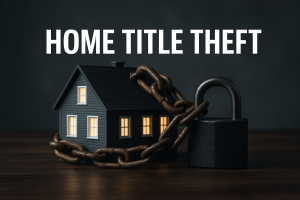It makes logical sense that if you have some cash in reserve, you will have less stress in your day to day financial life. I call this financial cushion “attitude money.” If you have a cash balance equal to a month or two of expenses, you will eliminate many of the day to day worries and headaches associated with trying to manage a small cash balance. This is a little different in my opinion than the common term “emergency fund” which would be to cover more significant financial shocks, likely covering 3 – 6 months of expenses.
For an example of the difference between having attitude money and not having it, let’s take a look at two people, Jim and Pete. Both individuals average $2,000 per month of expenses and cash obligations. Pete was smart with his money and slowly built up a “cash reserve” balance in his checking account equal to $4,000, or two months of expenses. Pete built up this balance by spending less than his income over a period of time. Jim, on the other hand, didn’t live within his means. Jim was often running a checking account cash balance close to zero. Jim was very stressed out because he often didn’t have the money to pay his rent and other bills. He had to watch his account very carefully so as not to overdraw the account and incur additional bank fees. Jim was often stressed out because he had to always try to figure out how to pay his bills, since his cash situation was not very good.
Pete, on the other hand, never worried about his day to day bills. Pete always had enough money in his account. As a result, paying bills was a piece of cake! Pete never had to worry about overdrawing his account. Pete didn’t waste time juggling expenses in an attempt to manage a very low cash balance. Pete had much less stress in his financial life and, therefore, enjoyed life more. The only difference is that Pete withheld some spending for a period of time to build up a cash balance that he can have in his account for many years to act as a “cushion” to give him peace of mind.
The cushion in cash also protects Pete in case of an unexpected expense (such as a car repair). Who hasn’t had an unexpected car repair bill (or any other unexpected expense) of $300 to $600 or more? Pete would have money to pay the bill. If Pete had to dip into this cushion to pay the unexpected repair, he would then begin to work toward replenishing the attitude money back to normal levels before going back to his normal spending habits. If Jim had an unexpected car repair, however, he would probably resort to a credit card or other borrowing since he didn’t have the cash. This would then lead to large interest charges since Jim could probably only make the minimum payment on the credit card since he is paycheck to paycheck with his expenses. Jim is a classic example of what can happen to people as they begin the slippery slope of consumer debt and credit cards.
Don’t let this be you! Work to build up the cash cushion now (you pick the pace you are comfortable with) and take some stress and worry out of your life. It may take a number of months to slowly build up the cash cushion, but once you do, you will be glad you did!



